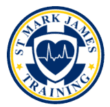Leg pain is any kind of pain that occurs anywhere between the pelvis and the heels. It is a common complaint that is frequently caused by an injury, cramp or other causes, which will be discussed further later. Some of these causes do not necessarily initiate in the leg but can be damage from other injuries. The pain can occur in one part of the leg, such as the calf and knee, or the whole leg and can be acute, chronic, temporary, recurrent or gradual. Mild leg pain can often be managed with sufficient home treatment.
Causes of Leg Pain
Leg pain may be symptomatic of a serious medical problem however, it is more often associated with cramps and injury. The following are the specific causes of leg pain:
- Injury
- Fracture of the femur (thigh bone) or tibia/ fibula (lower leg bones)
- Knee dislocation
- Stress fracture
- Muscle strain
- Tendinitis
- Shin splints
- Muscle cramps
- Dehydration
- Certain medications such as diuretics or statins
- Muscle fatigue
- Medical problems
- Blood clot
- Atherosclerosis
- Varicose veins
- Arthritis
- Gout
- Cellulitis
- Osteomyelitis
- Nerve damage
When to Seek Medical Assistance Regarding Leg Pain
Leg pain can characterized as mild, moderate or severe. It may be confusing to a person when it might be best to seek medical help. The following tips are generally advised in cases of leg pain:
- When to seek emergency medical assistance
- Deep cut exposing the tendons or bones
- Incapable of bearing weight on the affected leg and trouble walking
- Hearing a pop sound at the time of the injury
- Pain, swelling, redness or warmth in the calf (back portion of lower leg)
- When to visit the doctor immediately
- Swollen, pale or unusually cool leg
- Signs of infection: red streaks from the wound, warmth and tenderness in the area, and fever
- Serious leg symptoms that appear with no apparent cause
- Calf pain that appears after sitting for a long period of time
- When to schedule a visit to the doctor
- Swelling in both legs
- Aggravating pain
- Leg pain that occurs during or after walking
- Pain that lasts for several weeks without improvement despite home treatment
First Aid Management for Leg Pain

Treatment will vary on the underlying cause but mild leg pain usually responds well to treatment. First aid can also be applied to cases of broken leg bones and dislocation of joints along the legs. To manage leg pain:
- For cases of sprains and broken bones, follow the RICE method.
- Rest the affected leg and avoid doing any more activities. Immobilize the affected leg for broken bones.
- Ice the affected area for 15-20 minutes thrice daily. Wrap the ice in a towel or any cloth.
- Compress the affected leg using a compression bandage to limit swelling.
- Elevate the affected area as much as possible also to limit swelling.
- To ease pain and swelling that are not related to injuries:
- Avoid putting weight on the leg.
- Apply an ice pack three times a day for 15-20 minutes each.
- Elevate the leg whenever one is lying down or sitting.
- Take over-the-counter pain medications such as ibuprofen or naproxen.
Disclaimer: This article does not provide medical advice or treatment. This information given should not be used for self-diagnosis of the possible conditions. Seek medical attention when needed. To learn more about how to manage leg pain and other body pains, enrol in First Aid Courses with St Mark James training.
Source:
Leg Pain (2011). National Institutes of Health: MedlinePlus. Retrieved September 8, 2013, from http://www.nlm.nih.gov/medlineplus/ency/article/003182.htm
Leg Pain (2013). Mayo Clinic. Retrieved September 8, 2013, from http://www.mayoclinic.com/health/leg-pain/MY00080/DSECTION=when-to-see-a-doctor
